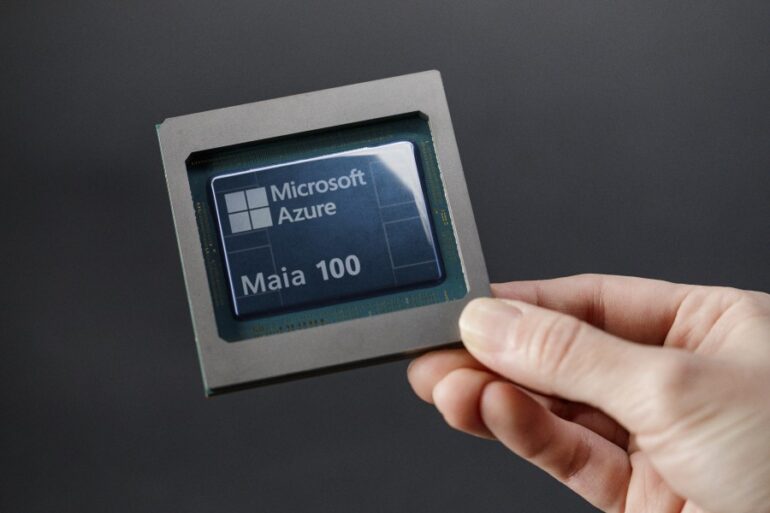- Microsoft introduces Azure Maia, a groundbreaking series of innovations revolutionizing AI infrastructure.
- Azure Maia 100, Microsoft’s in-house AI accelerator, is designed for cloud-based AI workloads, leveraging advanced semiconductor technology.
- The architecture of Maia 100 prioritizes scalability and sustainability, with custom power management and liquid cooling solutions.
- Microsoft emphasizes collaboration and openness, integrating Maia 100 with popular open-source frameworks and introducing the Microscaling (MX) data format.
- The release of Azure Maia signifies Microsoft’s commitment to driving innovation in AI infrastructure on a global scale.
Main AI News:
In a bold stride towards revolutionizing the landscape of artificial intelligence (AI) infrastructure, Microsoft has unveiled Azure Maia, a cutting-edge series of innovations designed to propel the era of AI from silicon to software to systems. As the demand for faster, more efficient compute and AI solutions continues to surge across industries, Microsoft’s commitment to enhancing its global cloud infrastructure stands firm, promising customers and developers an unparalleled experience.
At the heart of this endeavor lies Azure Maia 100, Microsoft’s pioneering in-house AI accelerator, announced in November. Built on the foundation of both industry-leading technologies and Microsoft’s own innovations, Azure Maia 100 represents a significant leap forward in semiconductor innovation.
Designed specifically to tackle cloud-based AI workloads, Azure Maia 100 is the result of meticulous co-design efforts, marrying hardware and software from the ground up. Microsoft’s extensive experience in handling complex AI workloads, such as Microsoft Copilot, informed the chip’s design, ensuring optimal performance and efficiency.
What sets Maia 100 apart is its groundbreaking architecture, which pushes the boundaries of semiconductor innovation. Crafted using advanced packaging technology from TSMC, Maia 100 stands as one of the largest processors fabricated on a 5nm node. This achievement underscores Microsoft’s relentless pursuit of excellence in AI infrastructure.
Moreover, Microsoft’s collaborative approach with Azure customers and semiconductor leaders has been instrumental in shaping Maia 100’s development. By incorporating real-world workload requirements into its silicon design, Microsoft aims to deliver the best technology possible, empowering customers to achieve more in their AI endeavors.
Beyond its exceptional hardware capabilities, Azure Maia 100 embodies end-to-end systems optimization, designed for scalability and sustainability. Microsoft reimagined the entire stack to handle frontier models more efficiently, addressing the unique demands of AI workloads. Maia 100’s custom rack-level power distribution and management, coupled with its Ethernet-based network protocol, ensure optimal performance and scalability, while closed-loop liquid cooling enhances energy efficiency.
However, Microsoft’s vision extends beyond hardware advancements. The company is committed to fostering an open ecosystem, where collaboration drives innovation. Maia 100 integrates seamlessly with popular open-source frameworks like PyTorch and ONNX Runtime, simplifying the development of AI models on Azure infrastructure. Additionally, Microsoft has integrated Triton from OpenAI to facilitate kernel authoring, enhancing portability and flexibility without compromising efficiency.
Furthermore, Maia 100 introduces the Microscaling (MX) data format, a standardized specification aimed at accelerating model training and inferencing times. Microsoft’s collaboration with industry giants such as AMD, ARM, Intel, Meta, NVIDIA, and Qualcomm underscores its commitment to driving widespread adoption of AI innovations.
Conclusion:
The unveiling of Azure Maia signifies a significant leap in AI infrastructure, showcasing Microsoft’s commitment to driving innovation in the market. With its advanced semiconductor technology, optimized systems architecture, and collaborative approach, Microsoft is poised to reshape the landscape of AI computing. This move not only strengthens Microsoft’s position in the market but also sets a new benchmark for AI infrastructure, potentially spurring further advancements and competition within the industry.

